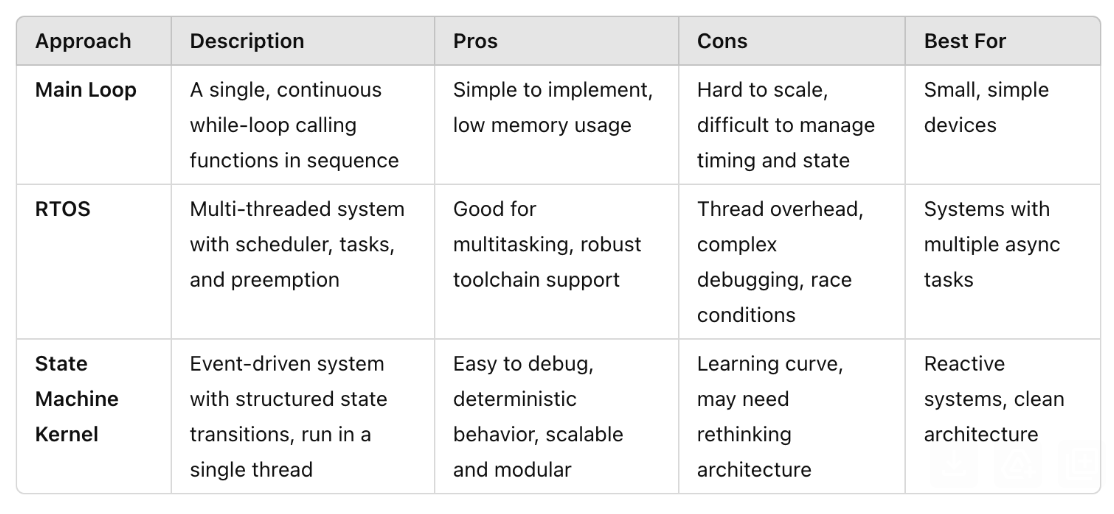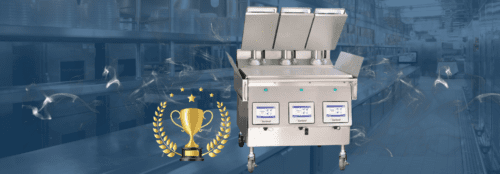The architecture you choose for your embedded firmware has long-lasting consequences. It impacts how quickly you can add features, how easily your team can debug and maintain the system, and how confidently you can scale. While main loops and real-time operating systems (RTOS) are common, a third option — the state machine kernel — often delivers the most value in modern embedded development. At Wolff Electronic Design, we’ve used this approach for over 15 years to build scalable, maintainable, and reliable systems across a wide range of industries.
Every embedded system starts with one big decision: how will the firmware be structured?
Many teams default to the familiar—using a simple main loop or adopting a RTOS. But those approaches can introduce unnecessary complexity or long-term maintenance headaches. A third option, often overlooked, is using a state machine kernel—an event-driven framework designed for reactive, real-time systems. Below, we compare the three options head-to-head to help you choose the right architecture for your next project.
Comparison Chart:

Why the State Machine Kernel Wins:
Promotes Innovation Without Chaos
With clear, hierarchical state transitions, your codebase becomes modular and self-documenting — making it easier to prototype, iterate, and innovate without fear of breaking hidden dependencies or triggering bugs.
Prevents Hidden Complexity
Unlike RTOSes, where tasks run in parallel and can create race conditions or timing bugs, state machines run cooperatively in a single-threaded model. This eliminates deadlocks, stack overflows, and debugging nightmares that come with thread-based systems.
Scales Without Becoming Fragile
As features and states are added, the system remains predictable. You don’t have to untangle spaghetti logic or rework your entire loop to support new behaviors — you just add new events and state transitions.
Improves Maintainability and Handoff
Because logic is encapsulated in individual states with defined transitions, the code is easier to understand, test, and maintain. This lowers the cost of onboarding new developers or revisiting the system years later.
At Wolff Electronic Design, we’ve worked with every kind of firmware structure over the past 15+ years. Our go-to for complex embedded systems? A state machine kernel. It gives our clients the flexibility of RTOS-level structure without the bugs, complexity, or overhead. Whether you’re developing restaurant equipment or industrial control systems, this architecture offers a better path forward: clean, maintainable, and built to last.
Learn more about our Quantum Leads State Machine Learning capabilities here.








